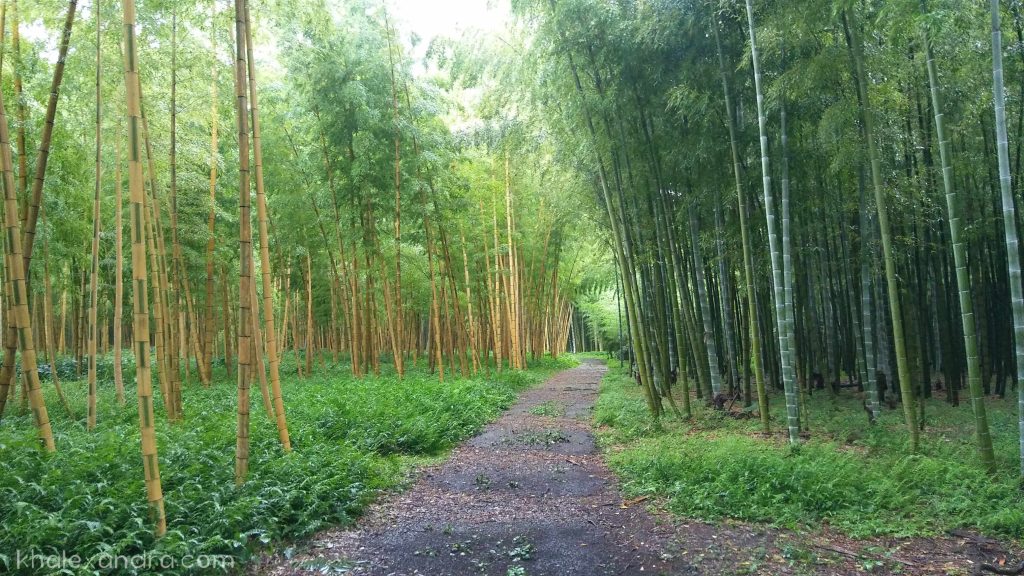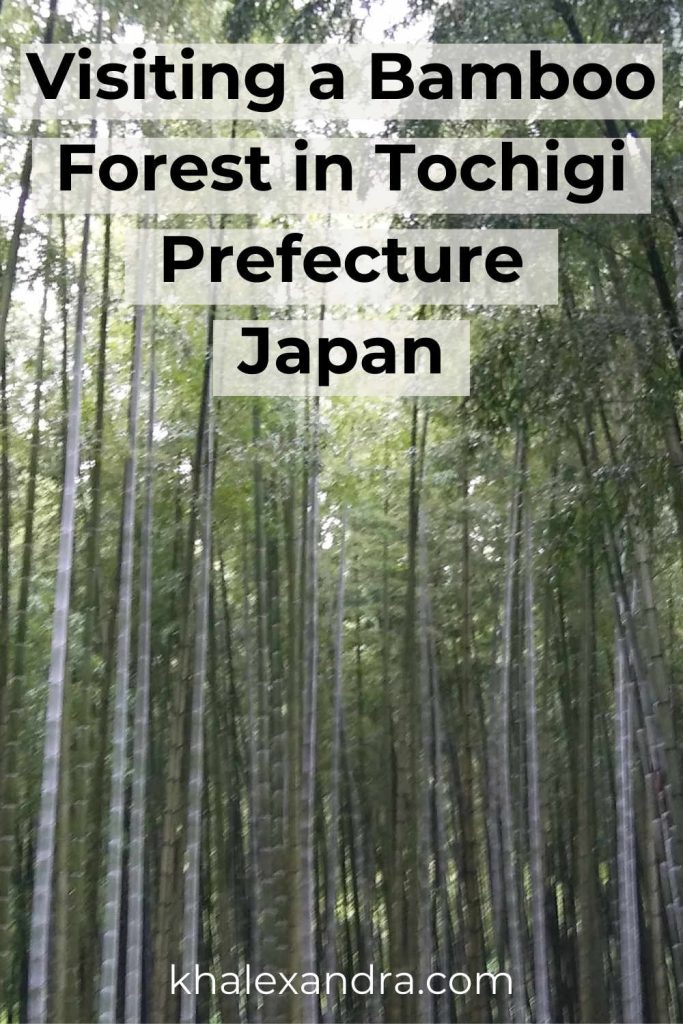Visiting a Bamboo Forest in Japan
This post may contain affiliate links, which means I'll receive a small commission if you purchase through my links, at no extra cost to you. Please read full disclosure for more information. Your support is appreciated!.

If you are going to Japan and will miss Arashiyama Bamboo Grove in Kyoto, here is another great option for you.
Wakayama Bamboo farm is just on the outskirts of Utsunomiya City in Tochigi Prefecture, which is a main train hub.
So, even if you don’t have a car, it is very easy to use the bus to get there from Utsunomiya train station.
How to get there:
It is possible to drive from Tokyo (about two hours).
Click here to see directions on their website.
Train and Bus
We personally took the train and bus. From Utsunomiya Sta. West Exit, we looked for the 52 or 56 bus (but make sure you check in person, as it may be subject to change). Here is a website where you can check the bus schedule in English from Utsunomiya Sta. West Exit to Nozawatera temple. (This site also has a map for you to see).
Walk from Nozawatera Bus Stop
It took about 30 minutes to get to the bus stop. When facing the road from in front of Nozawatera temple, we began to walk left, towards outside of town.
We walked about ten minutes from the bus stop to the farm. (The road split at a traffic light, so we kept to the road on the left hand side from Nozawateramae bus station. You will see the bamboo on the left).

The walk was very pleasant. Although a bit rainy that day, it was cool and the scenery was very nice. The woman at the farm spoke fluent English so she explained to us about the farm and told us about the different pathways through the bamboo.

Here are the hours and cost according to the Wakayama Farm website:
Weekday hours are 9:00-17:00 year round with the last entry at 16:30 (1/2 hour before closing).
Weekend and Holiday hours are 9:00-20:00 except the summer months of Jun, Jul, Aug when they are open until 21:00 and the winter months of Dec, Jan, and Feb when they are open until 19:00.
(Last entry is at 1/2 hour before closing time).
The start time for illumination is after sunset, therefore the time will vary with the seasons.
Wakayama, a family farm with a long history, has recently started welcoming visitors.The farm is very scenic with lovely walking paths among the bamboo. We did not feel drained after exploring the area as it’s not too extensive.

The Farm is unique in that it contains many different types of bamboo, some of which cannot be found elsewhere.

Moso Bamboo:
Moso Bamboo is the largest type of bamboo in Japan. Moso is a green variety and popularly cultivated for the delicious bamboo shoots.
Not only are the shoots delicious, but it is used for sturdy buildings as well.
While in Japan, I helped build a small building with this variety of bamboo, and saw it used as a house for goats.
Arashiyama Bamboo Grove or Sagano Bamboo Forest in Kyoto is made up mostly of this type of bamboo.
Kinmei Moso Bamboo:
This bamboo is a beautiful golden color. It also has a checkered design with vertical green in between the gold. It was a bright spot in the forest even on the rainy day we visited.
Kinmei Moso Bamboo is unique in its coloring but is also edible.
Have you heard of the Japanese movie: Rurouni Kenshin (るろうに剣心)? You may remember a scene in this film within the golden Kinmei Moso Bamboo, which was filmed at this bamboo farm! There are other commercials and films that have scenes at Wakayama Farm as well.

Madake Bamboo:
Madake is a wild variety, and it has been growing in Japan for centuries. It is said to be native to both Japan and China. It can grow over one inch per hour and can reach over 70 feet tall!
Because of the fine fibers, it is used in bamboo crafts.
These are only a few, but there are many more varieties of bamboo at Wakayama farm, and some of these bamboos are available to buy for your own landscaping project if you live in Japan.

Bamboo crafts can be very intricate and dainty, as you can see from the bamboo ornaments pictured below.

In Japan, they use bamboo to make cups and dishes for eating. (The matcha tea experience at the farm uses a bamboo mug). They use bamboo for birdhouses, lamps, not to mention baskets, and bags. The bamboo fibers make fine clothing and sheets as well.
Other Activities at the Farm:
There are many things you can do at Wakayama farm, you can bring your children to do bamboo crafts.
If you would like an authentic experience, then you can book: “Matcha Tea in the Forest” and take home your bamboo mug. This Matcha Tea experience is only available on weekends and holidays from 10:00 – 19:30. Keep in mind the last call for tea is 30 minutes before last entry.
Camping
This is possible, but only via hammock, which you can rent from the farm. There are two restrooms near the camping sites, and the farm has free wifi! The area is very peaceful, so hammock camping would probably be lovely, and it is on my list to do next time I visit.
Not only can you camp overnight, you can also rent a hammock by the hour (for a very reasonable price). If I worked in Utsunomiya, I would be “napping” in the forest on my lunch break!
Produce
It is possible to pick bamboo shoots, blueberries and chestnuts at the farm during different seasons. Visitors can pick fresh bamboo shoots during the spring months of April and May. Blueberries are in season during July and August and chestnuts are an Autumn (September and October) delicacy. At their shop you can also purchase bamboo shoots, blueberry and chestnut products during other times of year.


Nighttime Illumination:
String lights illuminate the bamboo at Wakayama Farm at sunset, making for a delightful walk.
It is nice they are also open on weekends and holidays, in case you want to take your family.
During winter, they have Bamboo Winter Lights, a special yearly illumination which might be a nice outing during Christmas or if you want to visit Japan over your Christmas holiday vacation.
This bamboo forest was lovely and peaceful, and a wonderful place to visit on a day trip to Utsunomiya. Many of the activities I hope to try when I return.
If you choose to go, it will be a very memorable experience for you, too!


